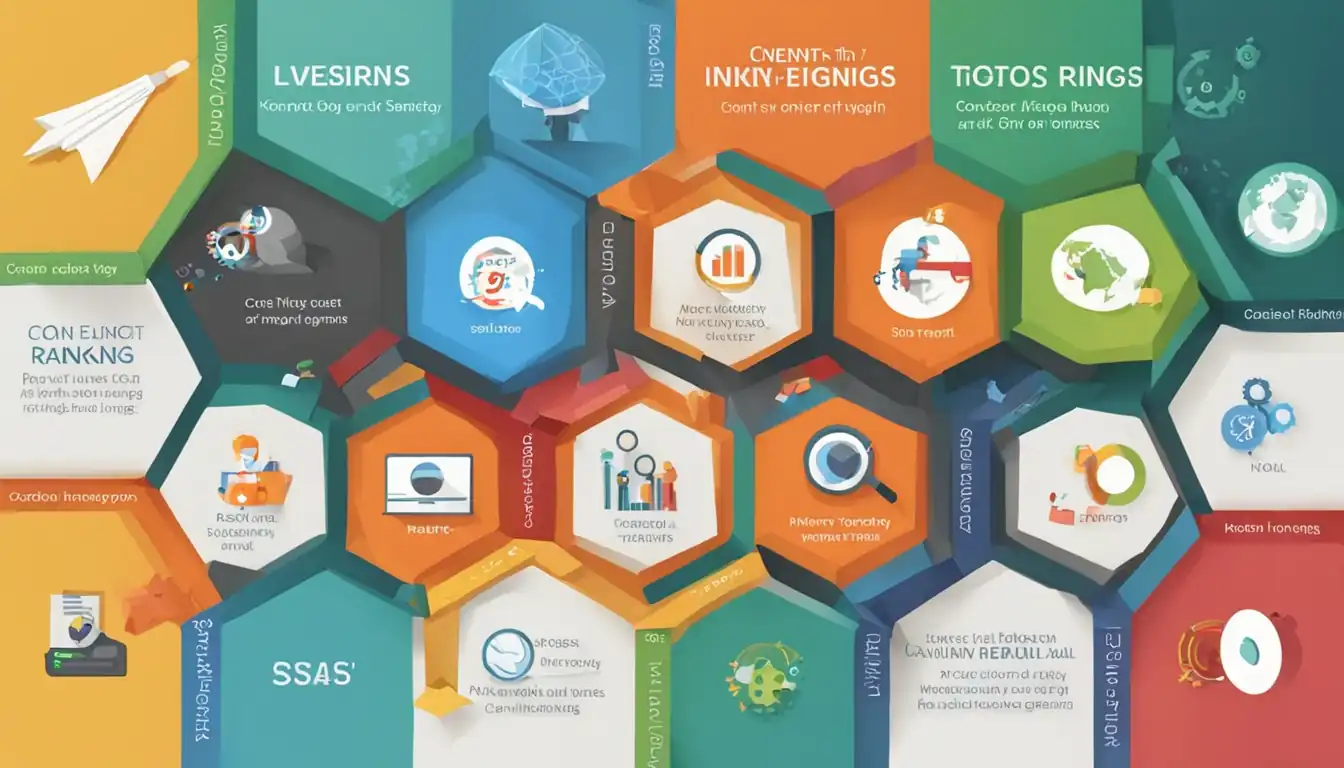Crafting SEO-Friendly Content: A Natural Approach to Digital Success

Crafting SEO-friendly content is a crucial aspect of digital success in today's competitive online landscape. By understanding the basics of SEO and incorporating key elements into your content, you can boost your visibility and reach a wider audience. Planning your content with SEO in mind, utilizing writing tips for optimization, and implementing advanced techniques will help your content stand out among the rest. Let's explore how to take a natural approach to crafting SEO-friendly content that resonates with both search engines and human readers.
Understanding SEO Basics

What is SEO and Why It Matters
Search Engine Optimization (SEO) is the practice of optimizing your website content to improve its visibility in search engine results. By strategically incorporating relevant keywords, creating high-quality content, and adhering to search engine guidelines, you can increase your website's ranking and attract more organic traffic.
The Evolution of SEO Practices
Over the years, SEO practices have evolved significantly. Gone are the days of keyword stuffing and link spamming. Search engines now prioritize user experience and quality content. This shift has led to a more natural approach to SEO, focusing on providing valuable information to users rather than manipulating search algorithms.
"SEO is no longer just about tricking search engines; it's about creating valuable content that resonates with your audience."
Key Elements of SEO-Friendly Content
Crafting SEO-friendly content is essential for digital success in today's competitive online landscape. By incorporating key elements into your content strategy, you can improve your website's visibility and attract more organic traffic. Here are some crucial components to consider when creating SEO-friendly content:
Balancing Keywords with Readability
One of the most important aspects of SEO-friendly content is finding the right balance between incorporating keywords and maintaining readability. While keywords are essential for search engine optimization, stuffing your content with too many keywords can make it sound unnatural and spammy. To strike a balance, focus on using relevant keywords strategically throughout your content while ensuring that it flows naturally and provides value to your readers.
Importance of Structured Data
Structured data plays a significant role in helping search engines understand the context and relevance of your content. By implementing structured data markup on your website, you can provide search engines with additional information about your content, such as product details, reviews, events, and more. This not only enhances the visibility of your content in search results but also improves the overall user experience by displaying rich snippets that stand out to users.
Remember, crafting SEO-friendly content is not just about optimizing for search engines; it's also about creating valuable and engaging content that resonates with your target audience. By focusing on these key elements, you can enhance your digital presence and drive organic traffic to your website.
Planning Your Content for SEO
Crafting SEO-friendly content requires careful planning and strategizing to ensure that your content is not only engaging but also optimized for search engines. Here are some key steps to consider when planning your content:
Researching the Right Keywords
Keyword research is the foundation of any successful SEO strategy. By identifying relevant keywords that your target audience is searching for, you can tailor your content to meet their needs and improve your chances of ranking higher in search engine results pages (SERPs). Use tools like Google Keyword Planner or SEMrush to identify high-volume keywords with low competition.
Outlining for Clarity and Flow
Before diving into writing, it's essential to create a clear outline for your content. This will help you organize your thoughts, maintain a logical flow, and ensure that you cover all necessary points. Start by outlining your main ideas and subtopics, then flesh out each section with supporting details and examples. A well-structured outline will not only make the writing process smoother but also result in more cohesive and reader-friendly content.
Writing Tips for SEO-Enhanced Articles
Creating Engaging and Relevant Titles
Crafting compelling titles is crucial for attracting readers and improving search engine visibility. When creating titles for your content, consider incorporating relevant keywords that accurately reflect the topic of your article. Additionally, aim to make your titles engaging and intriguing to entice users to click through to your website.
Key Points:
- Include relevant keywords in your titles
- Make titles engaging and intriguing
- Reflect the content of your article accurately
Mastering the Art of Meta Descriptions
Meta descriptions play a vital role in enticing users to click on your content when it appears in search engine results. These short snippets provide a brief summary of what users can expect from your article. When crafting meta descriptions, ensure they are concise, informative, and include relevant keywords to improve visibility.
Key Points:
- Keep meta descriptions concise and informative
- Include relevant keywords
- Provide a preview of what users can expect from your content
Advanced Techniques in Content Creation
Leveraging LSI Keywords
LSI (Latent Semantic Indexing) keywords are terms related to the main keyword of your content. By incorporating these related keywords into your content, you can improve its relevance and help search engines understand the context of your topic. This not only enhances your SEO efforts but also provides valuable information to your readers.
Key Points:
- Use tools like Google's Keyword Planner or LSIGraph to identify relevant LSI keywords.
- Integrate LSI keywords naturally throughout your content to avoid keyword stuffing.
- Focus on creating high-quality, informative content that incorporates both main and LSI keywords seamlessly.
Optimizing Images and Videos for Better Engagement
Images and videos are essential elements of engaging content that can enhance user experience and boost SEO. By optimizing these multimedia assets, you can improve their visibility in search results and attract more traffic to your website.
Key Points:
- Use descriptive file names and alt text for images to make them more searchable.
- Compress images to reduce load times and improve site speed, which is a ranking factor for search engines.
- Include relevant keywords in video titles, descriptions, and tags to increase their visibility on platforms like YouTube.
Remember, a holistic approach to content creation that includes leveraging LSI keywords and optimizing multimedia assets can significantly impact your digital success.
Ensuring Your Content Stands Out
Creating SEO-friendly content is essential for digital success, but it's not just about stuffing keywords into your text. To truly stand out in the crowded online space, you need to take a more natural approach that focuses on providing value to your audience.
Incorporating Internal Links Strategically
Internal linking is a crucial aspect of SEO that often gets overlooked. By strategically incorporating internal links within your content, you can help search engines better understand the structure of your website and improve the user experience for visitors. When adding internal links, make sure they are relevant to the content and provide additional value to the reader.
Encouraging Social Shares and Interaction
Social signals play a significant role in SEO rankings, so it's important to encourage social shares and interaction with your content. Make it easy for readers to share your content by including social sharing buttons on your website. Additionally, engage with your audience on social media platforms to foster a sense of community around your brand. The more people interact with and share your content, the more visibility it will gain in search engine results.
Conclusion
Incorporating SEO strategies into your content creation process doesn't have to be daunting or unnatural. By following the tips outlined in this post, you can create engaging, relevant, and optimized content that drives traffic to your website and enhances your online presence. Remember to balance keywords with readability, plan your content strategically, utilize advanced techniques for optimization, and encourage interaction through internal links and social shares. With a natural approach to crafting SEO-friendly content, you'll be well on your way to digital success.